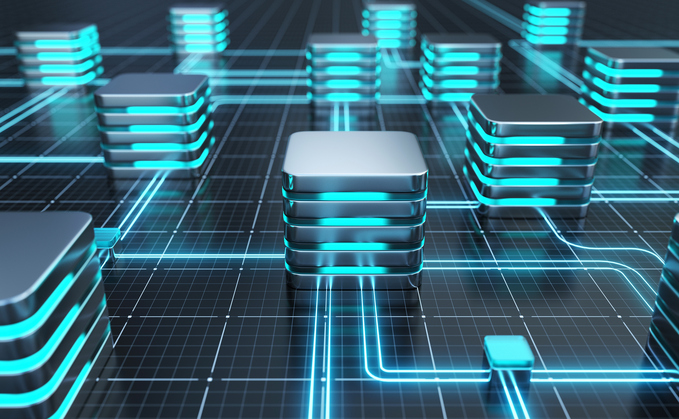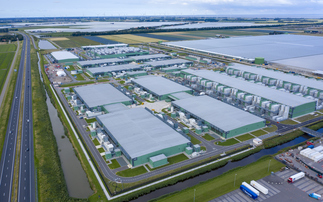
With the proliferation of applications, organisations need underlying databases that allow for scalability, speed, and security. Developer productivity is tied to these platforms being like their electrical outlets - always on, scaling as needed, and simple to use. This allows them to focus on solving business problems rather than day-to-day database management.
To meet these needs, MongoDB launched its developer data platform in June this year, addressing the need of today's developers for database platforms that go beyond the capabilities of a traditional relational database.
As part of this launch, MongoDB also recently announced Queryable Encryption, which allows customers to encrypt sensitive data from the client side, store it as fully randomised encrypted data on the database server side, and yet still be able to run expressive queries on the encrypted data.
To find out more about these developments and others, Computing spoke to MongoDB's CTO Mark Porter.
What is your role at MongoDB and what is your background in the technology industry?
"I'm the Chief Technical Officer at MongoDB. I've been with MongoDB, first on the board and then as CTO, for about 3 years now. Before that I had a lengthy technical career at Oracle, NASA, AWS, and Grab, which is the equivalent to Uber but in Southeast Asia. So, I've been doing systems software my whole career and MongoDB is no different. I just love deep technical stuff."
Why are data platforms rather than traditional databases so important when it comes to building applications?
"If you think about the hierarchy of needs in developers, it used to be we just wanted electricity and then we wanted a computer. And then we went to the cloud, and we got these virtual machines. But the hierarchy of needs has changed because the demand for development speed has changed. We used to think about apps rolling out in years, and then maybe months, and now when you think about what happened during Covid, companies had to go digital in weeks or they were out of business. Note that this trend was already happening, but Covid accelerated it.
"So, what does that mean? It means that developers aren't just looking to tie a database with a search engine with some mobile framework, they need it all done for them. So, we're changing the foundation.
"By putting search together, by putting mobile together, by putting charts together, and by putting app analytics together, we're the glue. It's not enough that the components be excellent - they need to be elegantly integrated. That's the key benefit of the platform. And that's why "just databases" aren't enough anymore."
What sets MongoDB's platform apart from its competitors?
"As I took the board position and then the CTO position, I was stunned by how much of MongoDB's focus was on the paths people take through the application and not having any dead ends and not having any place where there wasn't a help box, and just making it frictionless. Our customers are developers, and the focus on making their days more productive and pleasant is literally job one here.
"Of course, MongoDB makes great systems software; lots of people create great systems software. But we create great systems software that's easy to use and integrate with. And it's completely open. We don't believe in closed ecosystems. We believe in a level playing field where you can adopt our technology because it's better and because it makes you happier. And if we ever fail you in that promise, you don't feel locked in."
Why is it important to not just be able to scale up but also scale down when it comes to applications?
"Back when I started my career an app might go from 10 users to 100 users to 1,000 users in a year. Now if your app is featured on an app store, you might go from 50,000 concurrent users to over 1 million concurrent users almost instantly.
"The ability to scale up prevents your biggest success from turning into your biggest failure. Almost all data platforms to date live on single machines where your only direction of scaling is vertical; scaling to a bigger and bigger machine. MongoDB has always been horizontally scalable, which means you can just keep adding machines. Now one of our goals is making that scalability literally invisible to customers.
"With our serverless offering, it scales up and down and all you do is just keep sending requests to the database. When you send fewer requests to the database, it costs you less and it scales down. When you send more requests to the database, it will cost you a little bit more and it will scale up."
Why aren't other organisations offering Queryable Encryption and what have users gained from this technology?
"We have been working on Queryable Encryption for years and our competitors and other people offering data platforms thought it was impossible.
"The researchers that we hired, their entire 30-year career has been in what is called structured encryption, which is the basis of our tech. And it is a fundamentally different technology than homomorphic encryption which is the unicorn which everyone else has been chasing. They'll never catch homomorphic encryption, and make it work well, as it is a dead-end technology.
"Our technology is not a dead-end technology. The fact that you can query fully-encrypted fields with match and you can do it at only a small performance hit is just game-changing."
What do you see as being the most exciting use cases for Queryable Encryption?
"I can't tell you how many development groups have been frustrated with their IT departments, their CISOs, and with their data managers who have said you're not moving this workload to the cloud because of security concerns or compliance and regulation. With Queryable Encryption, people tell me regularly ‘now we can finally move to the cloud'.
"I think the most important, most exciting part of the technology is we're seeing this flood of workloads moving to the cloud. We have provided technology so our customers can break that barrier. They are actually moving those production workloads to the cloud to live beside their dev test workloads. And that's just amazing."
What would your advice be to organisations that want to move away from relational databases to a more modern architecture?
"I've been working on database migrations for my entire career and the advice I would give is to break cloud migration down into pieces. That monolith has 12,000 tables, it was built over 20 years. Find a part of the monolith which is your most important business critical need and then break that down into 50 or 100 tables and move that. And then move another one. And by the time you've moved a couple of apps, you will actually be more of an expert on relational to modernisation migrations than we are. Because you will know what they mean for your company.
"So I guess the advice I would give is start small - but start. And you will find that that's the right way to do it. These big bang 'we're going to move our entire relational estate to modernisation', they really don't work."
To find out more about MongoDB's developer data platform and Queryable Encryption, visit mongodb.com.
This article is sponsored by MongoDB.

















